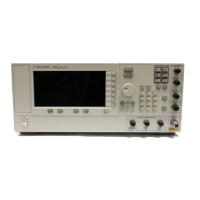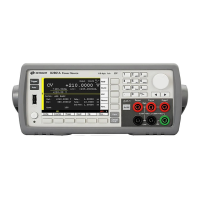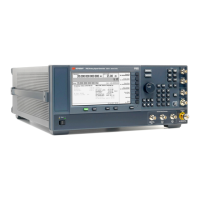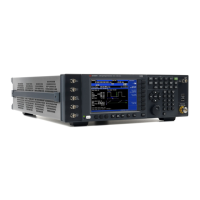Remote Interface Reference 4
Keysight 33210A User’s Guide 243
– After downloading the waveform data to memory, use the FUNC:USER
command to choose the active waveform and the
FUNC USER
command
to
output it.
– The following statement shows how to use the DATA command to download
seven points to volatile memory.
DATA VOLATILE, 1, .67, .33, 0, -.33, -.67, -1
DATA:DAC VOLATILE, {<binary block>|<value>, <value>, . . . }
Download binary or decimal integer values from -8191 to +8191 into volatile
memory. You can download from 1 to 8,192 (8K) points per waveform in
IEEE-488.2 binary block format or as a list of values. The range of values
corresponds to the values available using internal 14-bit DAC (Digital-to-Analog
Converter) codes. The function generator takes the specified number of points
and expands them to fill waveform memory.
– The values -8191 and +8191 correspond to the peak values of the waveform (if
the offset is 0 volts). For example, if you set the output amplitude to 10 Vpp,
“+8191” corresponds to +5V and “-8191” corresponds to -5V.
– The maximum amplitude will be limited if the data points do not span the full
range of the output DAC. For example, the built-in “Sinc” waveform does not
use the full range of values between ±8191 and therefore its maximum
amplitude is 6.087 Vpp (into 50 ohms).
–The DATA:DAC command overwrites the previous waveform in volatile memory
(and no error will be generated). Use the DATA:COPY command to copy the
waveform to non-volatile memory.
– Up to four user-defined waveforms can be stored in non-volatile memory. Use
the DATA:DEL command to delete the waveform in volatile memory or any of
the four user-defined waveforms in non-volatile memory. Use the DATA:CAT?
command to list all waveforms currently stored in volatile and non-volatile
memory (as well as the five built-in waveforms).
– After downloading the waveform data to memory, use the FUNC:USER
command to choose the active waveform and the
FUNC USER
command
to
output it.
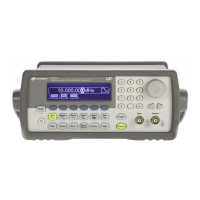
